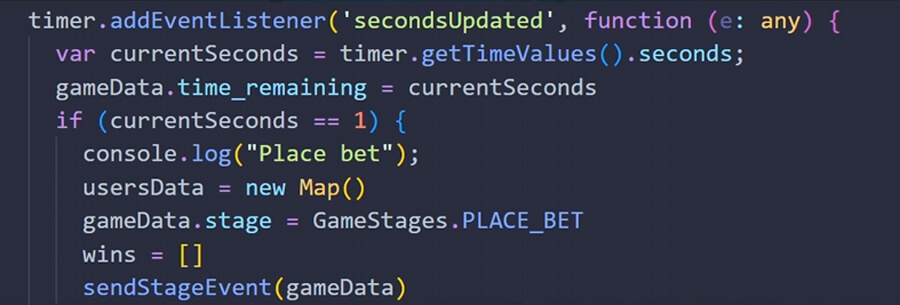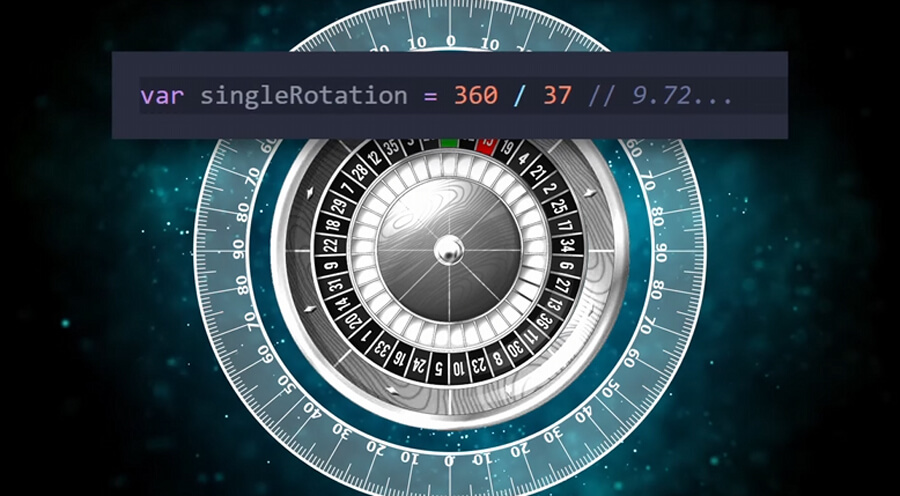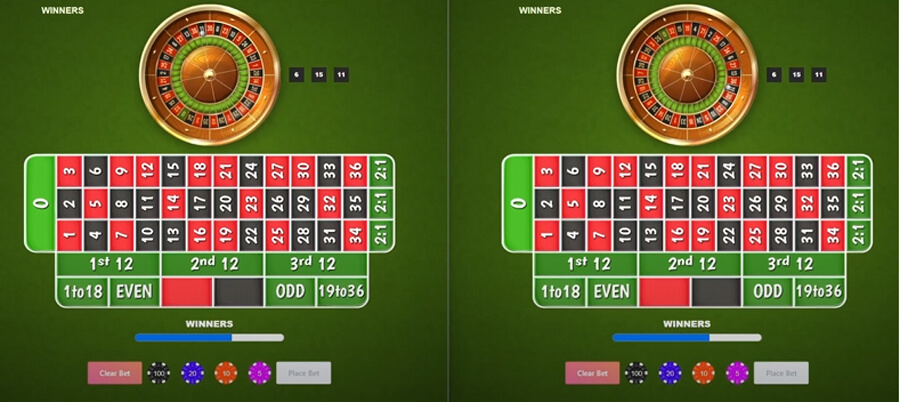Development of Casino Roulette on JavaScript

With constant changes in online casino technologies, The United States uses advanced technology in states like New Jersey, Pennsylvania, and New York. These platforms bring the classic casino experience into the digital age. The roulette wheel's digital transformation makes it more accessible and exciting with random numbers.
Our experts have reviewed online roulette casinos in New Jersey to give users insights to explore the best online roulette experiences. So, let’s find out how the development of Casino Roulette on JavaScript has impacted the online gambling world.
Roulette Wheel: How it Works
The roulette wheel is the centerpiece of the roulette game, a symbol of chance and probability. This famous element is recreated digitally with JavaScript and other web technologies. It imitates its real-life version. We simulate the spinning and ball movement to create random numbers, just like a real roulette spin. To keep the game fair, we use math and animation to make sure the spins aren't predictable.
Animations bring the wheel to life, typically using Canvas or SVG in the browser, which are powerful tools for drawing graphics. People often use JavaScript libraries, like anime.js, to create realistic animations that mimic the movement of a wheel and a ball. The server chooses the winning number and then tells the client to show it to everyone at once.
The digital roulette wheel is the main part of the game. It attracts players with its spinning and the suspense of where the ball will land. Players bet and spin the wheel, capturing the casino feel in a digital game. It's accessible anytime, anywhere.
Work with Animation and Testing
Animating elements in a game adds to its allure. Proper animations transform static images into a lively and dynamic experience.
Wheel Animation
To make a game with JavaScript, focus on animation for a realistic feel. For the roulette wheel, simulate a spinning wheel with precision. Animation frames must be timed perfectly to mimic the deceleration of a real wheel coming to a halt. This involves calculating the duration and easing of the spin before it slowly stops at the randomly generated number.

Ball Animation
The ball animation shows how a real ball moves. It has to roll and bounce before it stops in a pocket. The game has realistic ball movement because it includes physics like speed, friction, and gravity. Animation libraries help developers create smooth, realistic ball movement by providing useful tools.
Testing the Ball & Wheel
Testing guarantees that animations not only look real but are also technically accurate. This stage involves checking that the ball lands in a pocket that corresponds with the winning number generated by the game's logic. Tests are run repeatedly to confirm the integrity of the random number generation and the visual outcome.
Working on the Board
The roulette board is a grid where gamblers place their bets. In a digital game, this board must be interactive and responsive. Players should be able to select numbers or groups of numbers with ease. For developers, this means that each part of the board is accessible and that the game accurately records each bet.
Adding Chips
Chips are virtual tokens gamblers use to place bets on the roulette board. They must be easy to select and move to the desired location on the board. The system must keep an accurate account of the number and value of chips placed. Adding chips to the game makes it more interactive and gives a real feel to betting online.
Game Logic
At the heart of any online roulette game is its game logic. This invisible set of rules is what makes the game fair, thrilling, and operational. JS (JavaScript) is crucial for scripting these rules in a multiplayer casino roulette. This code controls every detail of the game, including the wheel spin, bet placement, and how players engage with the game.
Multiplayer Intro
In a multiplayer roulette game developed with React and JS technologies, the logic is designed for seamless interaction among multiple gamblers. Using Socket.io, the game supports real-time communication between the server and the clients. This backend framework enables the synchronization of game states across all gamers, so every participant sees the same wheel rotation and outcome at the same time.
How the Rounds Work
Each round in the roulette game follows a structured process. At first, the server starts the wheel spinning to find the winning number. Then, it tells all the connected clients the number, so everyone knows the same thing. After that, a timer starts. The game is divided into parts: betting, spinning the wheel, and announcing the winner. Gamblers easily track the stages of the game using a progress bar. This shows them how far they've come and how much time is left to bet.

Placing the Bets
Betting on roulette has been improved for a better user experience. Traditionally, users click on the roulette board to position their chips. However, we have introduced performance improvements to streamline this action. React.memo improves performance by minimizing the re-rendering of the chip component. In the future, updates might add a drag-and-drop feature for placing chips. There could also be separate displays for the winning number and betting options. The improvements make betting easier and faster when playing with others.
Playing the Game
Embarking on a session of this multiplayer challenge requires both luck and strategy. To start their journey, users join a lobby and chat with other competitors. Here, they prepare to place their bets.

Players are captivated by the smooth motion of the wheel as it spins using anime.js technology. They place chips on the board, a component designed for intuitive interaction. Players click on the desired cell, but future updates will add a drag-and-drop feature.
A timer helps keep track of game stages which adds a sense of progression. The ball stops. The winning number appears. This moment is shared with all clients. The server controls how it happens. Every gambler sees the same result at the end of the wheel, which makes the game fair and unified.
The excitement peaks as bets are won or lost, and chips are collected or dispersed. Users see the areas they bet on, with the winning number highlighted for clarity. This moment captures the essence of play, delivering the thrill of chance with every spin.
The developers have built more than just a game; they have crafted a dynamic environment that continues to grow. The game is always changing so players have more fun. Likewise, it might add coins and change where chips are placed.
Bottom Line
Players enjoy a multiplayer platform for roulette that is engaging and digital. This platform is made possible through React and Socket.io. Here, the spinning wheel's outcome hinges on server-side calculations to provide fairness. The roadmap for developers promises improvements. These include easier chip placement and more social features. The focus is on constant improvement. By continuously improving, the game stays true to its spirit and prioritizes user experience.
🔙 Back to Articles list.